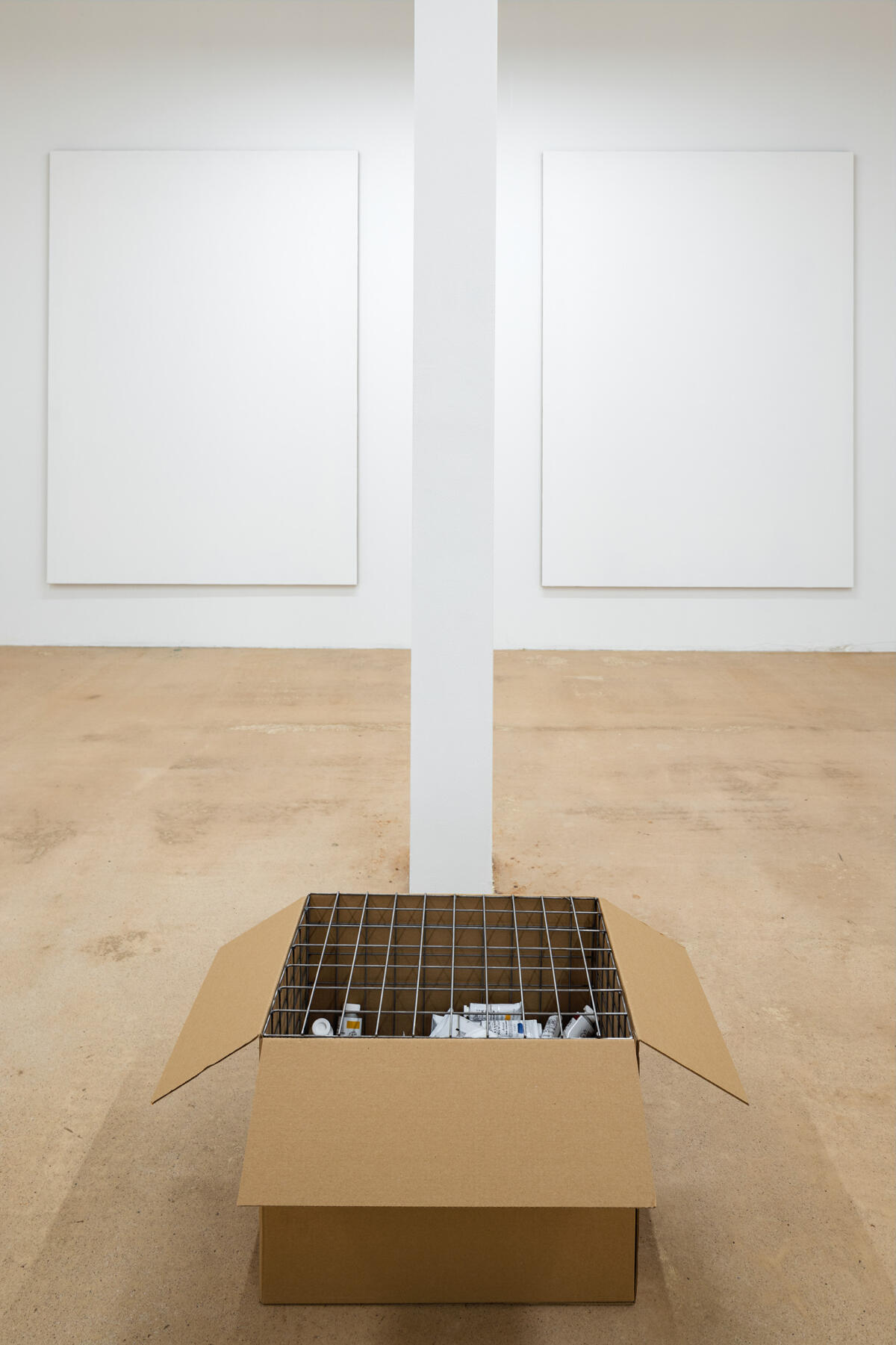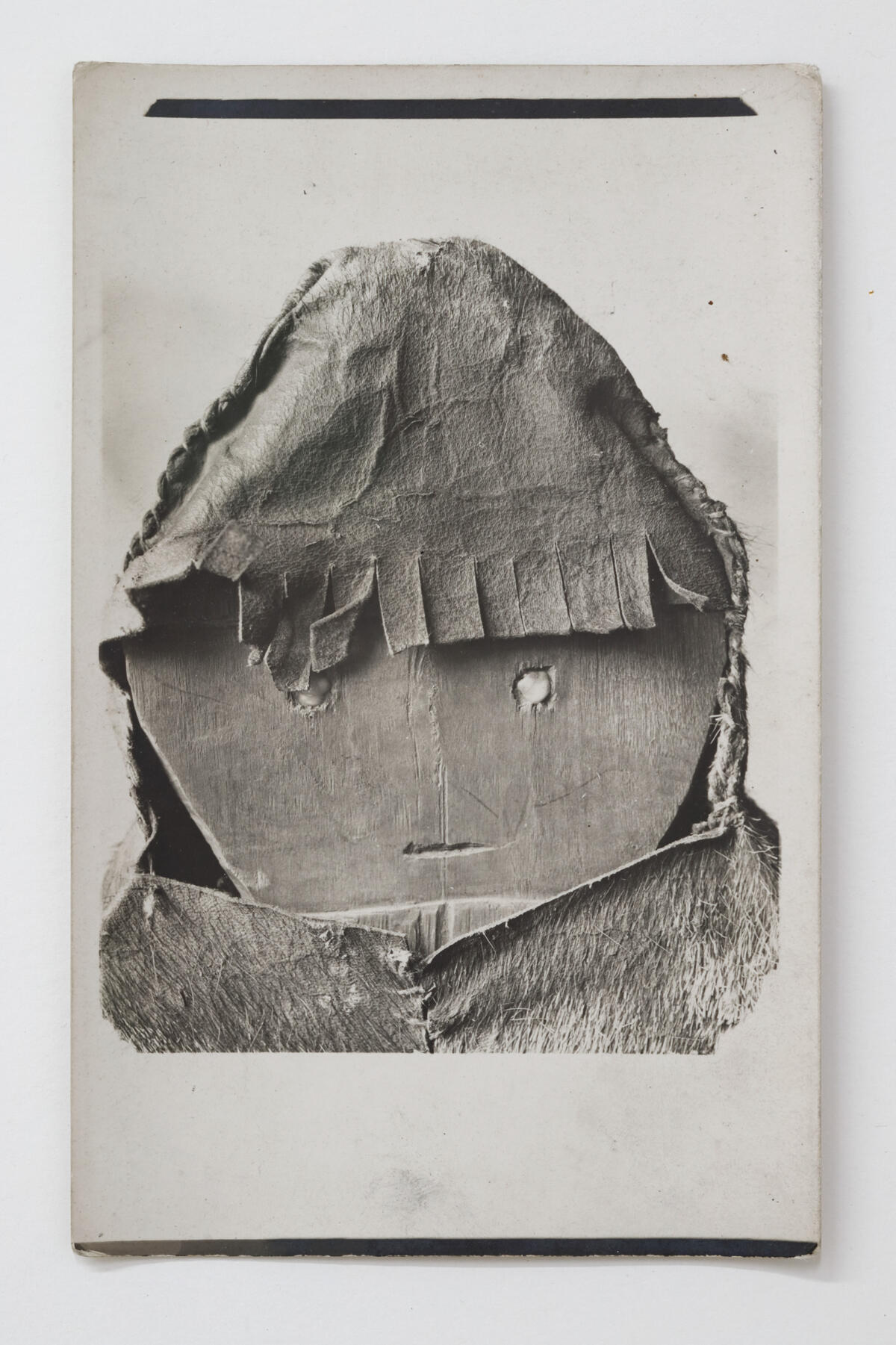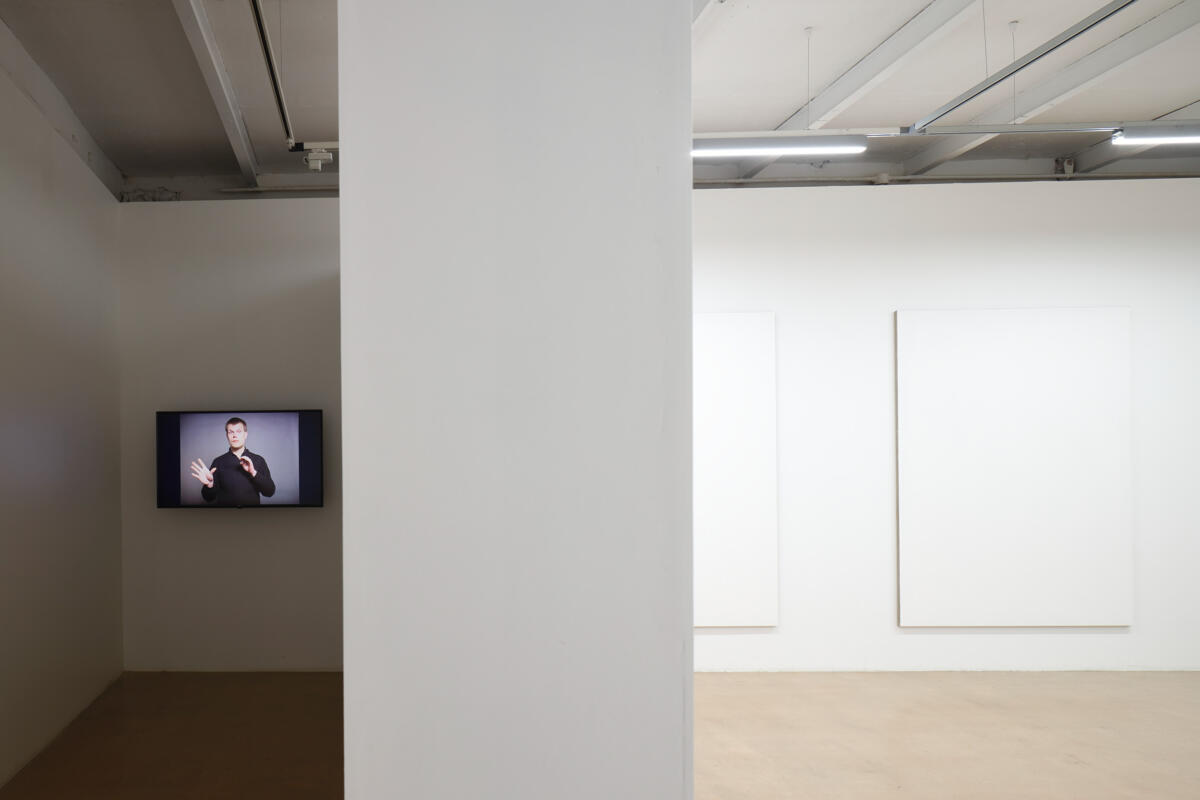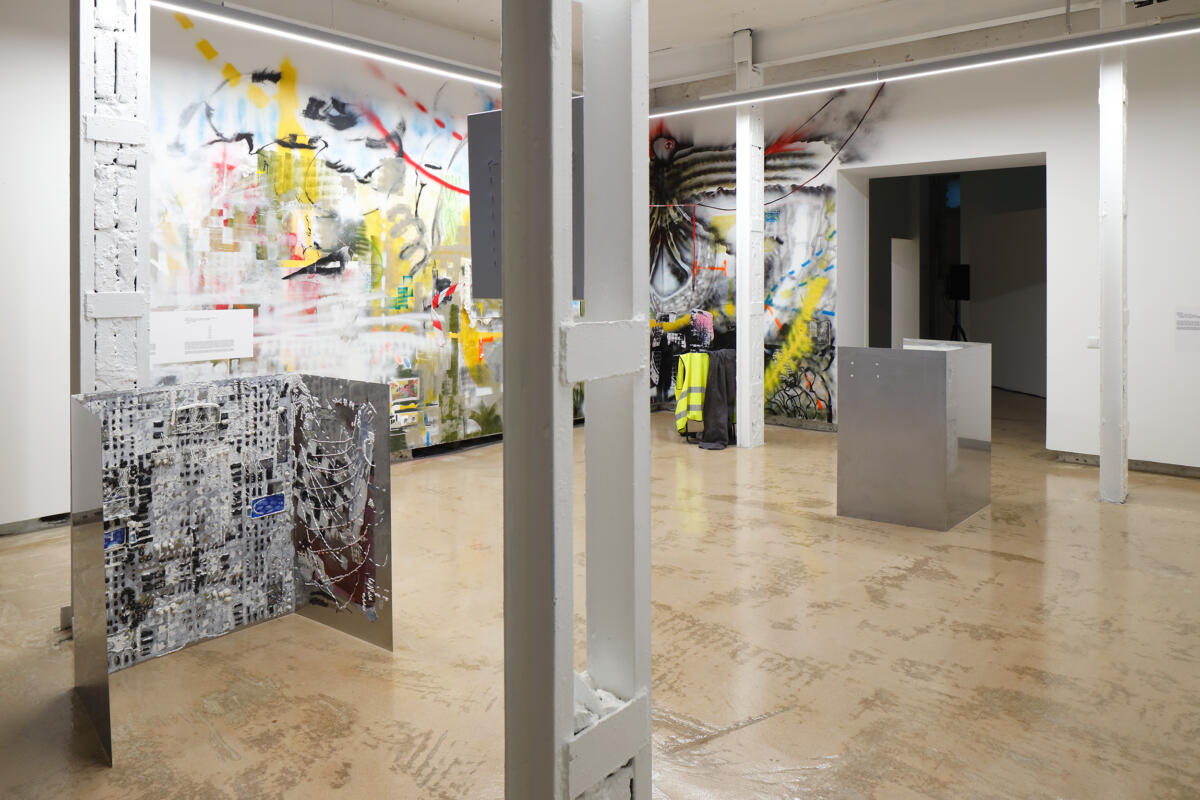[EN/LV] ‘Faktura (For a Nervous Spirit)’ at Kim? Contemporary Art Centre
![[EN/LV] ‘Faktura (For a Nervous Spirit)’ at Kim? Contemporary Art Centre](https://blokmagazine.com/wp-content/uploads/2020/10/sta6658-fotoansisstarks-2-1200x800.jpg)
[EN]
Faktura (For a Nervous Spirit) is a tribute to the spirit of unrest during the so-called “post-optical” era. This spirit, although it to a great extent contains a nostalgia for the pre-technological era with the raves and dance floors that define it, increasingly manifests itself as a model for a certain behaviour that individuals play out against the background of today’s reality. It shows most vividly when one starts to “wave back at the machine”. Guided by the search for free analogies and connections and mediated by various tools the exhibition focuses on the spirit world, on surveillance and monitoring strategies, and reflects on the physical/mental health and well-being of a society trapped in a city. The exhibition borrows ideas from the work “Faktūra” (1914) by Latvian-born Russian artist and theoretician Voldemārs Matvejs (1877-1914) to describe the surface quality of objects that are otherwise impossible to record by touch. Each piece included in the exhibition – archive photographs and videos, canvas and graffiti, as well as works created through hand-tapping, typeface and collage techniques by both living and deceased artists – gives off a “noise” or texture characteristic of a surface autonomy and content specific to them. The shift towards contemplating the role of the surface and texture in art today is intimately related to the growing distrust and pollution in the sense of vision, or according to Matvejs: ‘the existence of “noise”’, and hence faktura, is predicated upon the autonomy of the work’s individual material elements – faktura lies not in their unification but in their cacophony.
The faktura of the exhibition is formed by: photographs by Voldemārs Matvejs of “primitive” and at the same time expressive ritual spirit figures of the peoples of North Asia from the Latvian National Library collection (1913); a video-therapeutic film screening of Ieva Rubeze‘s (b. 1977) “Zāles” (2000), which includes performances by various Latvian magician-healers, “problem consultants” and “quack doctors” accompanied by white noise; A second, Riga version of Merlin Carpenter‘s (b. 1967) “Paint-It-Yourself” suggesting that the tension of the painting process is already present when all is on view are eight primed canvases and a box placed in the middle of the room full of ready-to-use oil paint tubes, and protected by plexiglass; Leigh Ledare‘s (b. 1976) nearly 60-minute-long film “Vokzal” (2016), which maps hidden social dynamics by capturing the banal, yet complex transit choreography of three Moscow train stations; a site-specific gesture against censorship by 0.0.01.0.0 (b. 1999) that has come about as a result of continuous hand/body movement, or graffiti fitness, further censoring the piece; Elza Sīle‘s (1989) set of a wall and floor bound paint applied metallic units that builds up a vocabulary of psycho-spatial typologies in flow; Vanessa Gravenor‘s (b. 1992) video “Me/My Bullet” (2016), which is based on personal experience of the terrorist attacks in Paris in 2015, that through an absurd historical point of view traces the duration of the attack, and the bullet, to the song “The Sound of Silence”; a photograph of famous bionic pop artist Viktoria Modesta (b. 1988) from the Counterflow (2016) campaign that conveys a multidisciplinary approach to future-pop identity and performance art with a post-human edge and is accompanied with the author’s call to discard past prejudices and to make way for fully fluid identity; the curator’s essay from 2019 (in Latvian, Russian and English) transferred to the wall by Aleksandra Samulenkova (b. 1986) and set in the smart-extravagant and “witchy” typeface Zangezi; and James Bridle‘s (b. 1980) video “My Delight on a Shining Night” (2018) which is accompanied by an ancient English melody that glorifies thieving and recordings of a numbers stations that was filmed in Akrotiri, a joint British-US base for over-the-horizon surveillance and global intelligence gathering, which is at the same time home a large population of flamingos. The exhibition also includes the seminal publication “Creative Principles in the Plastic Arts: Faktura” (1914) from the Zuzāns Collection.

















[LV]
“Nervozā gara faktūra” ir veltījums nemiera garam tā dēvētajā “post-optiskā” laikmetā. Šis gars, lai arī lielā mērā ietver nostalģiju pēc pirms-tehnoloģiju ēras ar tajā valdošajiem reiviem un deju grīdām, pieaugoši izpaužas kā noteiktas uzvedības modelis, kādu indivīds izspēlē uz šodienas realitātes fona. Visuzskatāmāk tas parādās momentā, kad tas sāk “māt atpakaļ mašīnai”. Brīvu analoģiju un sakarību meklējumu vadīta, izstāde pievēršas ar mediju rīku starpniecību uzrunātai garu pasaulei, novērošanas un monitoringa stratēģijām un pilsētā ieslēgtās sabiedrības fiziskās un garīgās veselības kvalitātes apcerei. Aizņemoties no latviešu izcelsmes krievu mākslinieka un teorētiķa Voldemāra Matveja (1877-1914) darbā “Faktūra” (1914) ietvertās nojēgas, kas apzīmē virsmas kvalitātes objektiem, kuriem citādi šīs kvalitātes ir neiespējams noteikt taustāmi, ekspozīcijā ietvertās arhīva fotogrāfijas un video, audekli un grafiti, ar rokām , kā arī burtveidolu un kolāžas tehnikā veidoti jauni un iepriekš radīti dzīvu un mirušu autoru darbi, katrs atsevišķi novada tiem īpaši piemītošu virsmas autonomijas un satura “troksni” jeb faktūru. Pāreja uz virsmas un tekstūras lomu aplūkošanu šodienas mākslā ir cieši saistīta ar pieaugošo neuzticību redzes maņai un tās piesārņojumu jeb, sekojot Matvejam, “trokšņa” klātbūtne” slēpjas darba atsevišķo materiālo elementu autonomijā – faktūra ir nevis to vienotībā, bet gan to kakofonijā.
Izstādes faktūra veidojas caur: Voldemāra Matveja uzņemtajām Ziemeļāzijas tautu rituālo gara figūru –“primitīvu” un vienlaikus tik izteiksmīgu – fotogrāfijām (1913) no Latvijas Nacionālās Bibliotēkas krājuma; Ievas Rubezes (dz. 1977) video-terapeitiskā kino seansa “Zāles” (2000) ar dažādu Latvijas burvju-dziednieku, “problēmu konsultantu” un “kaktu dakteru” performancēm baltā trokšņa pavadībā; Merlina Kārpentera (dz. 1967) “Paint-It-Yourself” otro – Rīgas versiju, kas ierosina, ka gleznošanas spriedze ir jūtama jau tad, kad viss, kas redzams, ir vien astoņi gruntēti audekli un telpas vidū izvietota kaste, pilna ar lietošanai nepieejamām eļļas krāsu tūbām; Lī Ledara (dz. 1976) gandrīz 60 minūšu garu ciplveida filmu “Vokzal” (2016), kas veic apslēptas sociālās dinamikas kartēšanu, fiksējot banālu, tomēr reizē sarežģītu trīs Maskavas vilcienu staciju tranzīta horeogrāfiju; 0.0.01.0.0 (dz. 1999) veidoto vietai piesaistīto, nepārtrauktas rokas / ķermeņa kustības jeb graffitti fitness rezultātā radīto žestu pret cenzūru, to tālāk cenzējot; Elzas Sīles (1989) ar krāsu noklātām metāliskas sienas un grīdas vienībām, kas darbojas kā psiho-telpisko tipoloģiju plūsmas kartējums; uz traumatiskas personiskas pieredzes Parīzes teroristu uzbrukumos 2015. gadā balstītu Vanesas Gravenoras (dz. 1992) video “Es/Mana lode” (2016), kas dziesmas “The Sound of Silence” garumā un caur absurdi-vēsturisku skatpunku izseko uzbrukuma ilgumam, kā arī lodei, kas trāpīja; ar multidisciplināru pieeju future-pop identitātei un performances mākslai ar post-cilvēka šķautni zināmās bioniskās pop-mākslinieces Viktorijas Modestas (dz. 1988) fotogrāfiju no “Counterflow” (2016) kampaņas, kuru pavada autores uzsaukums atbrīvoties no pagātnes aizspriedumiem pilnībā mainīgas identitātes virziena; Aleksandras Samuļenkovas (dz.1986) tipogrāfiska risinājuma gudri-ekstravagantā un “raganiskā” burtveidolā Zangezi sagatavotas kuratores esejas (latviešu, krievu un angļu valodās) pārnesi uz sienas; un Džeimsa Bridla (dz. 1980) video “Mans prieks zvaigžņotajā naktī” (2018), kas zagšanas slavināšanai veltīta sena angļu meldiņa un ierakstu no ciparu stacijām pavadībā uzņemts Akriori – apvienotā Lielbritānijas un ASV gaisa spēku bāzē ārpus horizonta novērošanai un globālās izlūkošanas datu vākšanai un vienlaicīgi – lielo flamingo sezonālā mājvietā. Izstādē ietverts arī seminālais izdevums “Daiļrades principi plastiskās mākslās. Faktūra” (1914) no Zuzānu kolekcijas.
Imprint
| Artist | 0.0.01.0.0., James Bridle, Merlin Carpenter, Vanessa Gravenor, Leigh Ledare, Voldemārs Matvejs, Viktoria Modesta, Ieva Rubeze, Aleksandra Samulenkova, Elza Sīle |
| Exhibition | Faktura (For A Nervous Spirit) |
| Place / venue | Kim? Contemporary Art Centre, Riga, Latvia |
| Dates | 4 September – 1 November 2020 |
| Curated by | Zane Onckule |
| Photos | Ansis Starks |
| Website | kim.lv/en/ |
| Index | 0.0.01.0.0. Aleksandra Samulenkova Elza Sīle Ieva Rubeze James Bridle Kim? Contemporary Art Centre Leigh Ledare Merlin Carpenter Vanessa Gravenor Viktoria Modesta Voldemārs Matvejs Zane Onckule |





